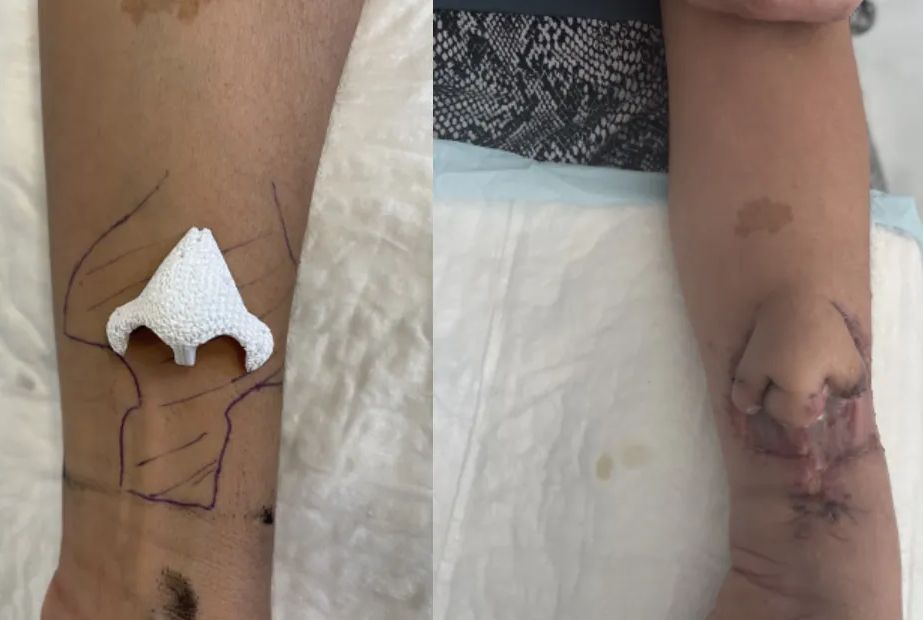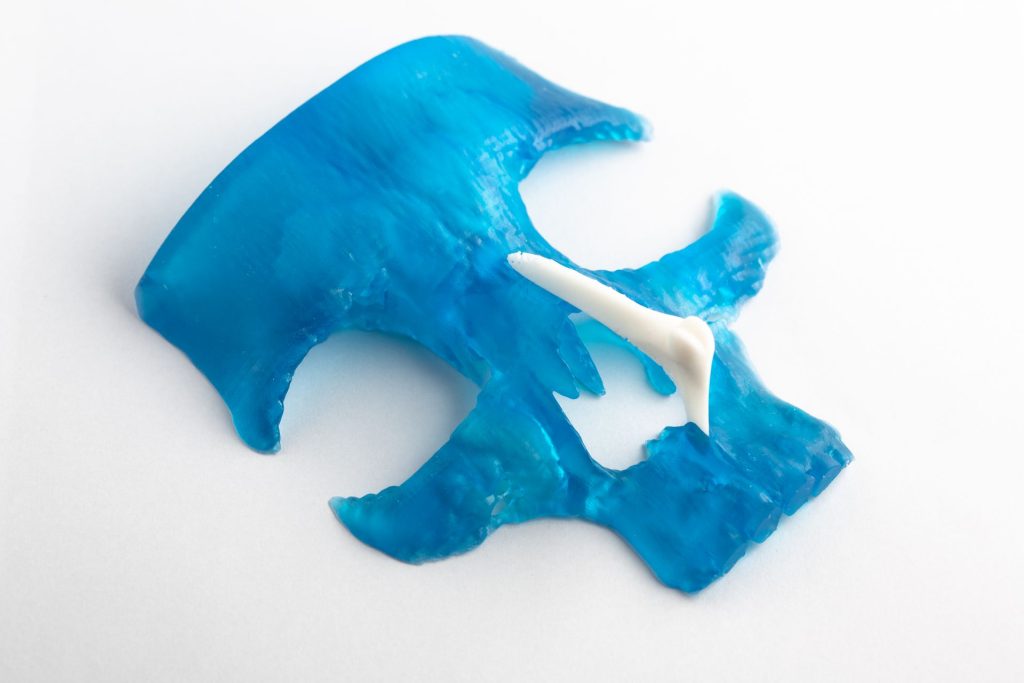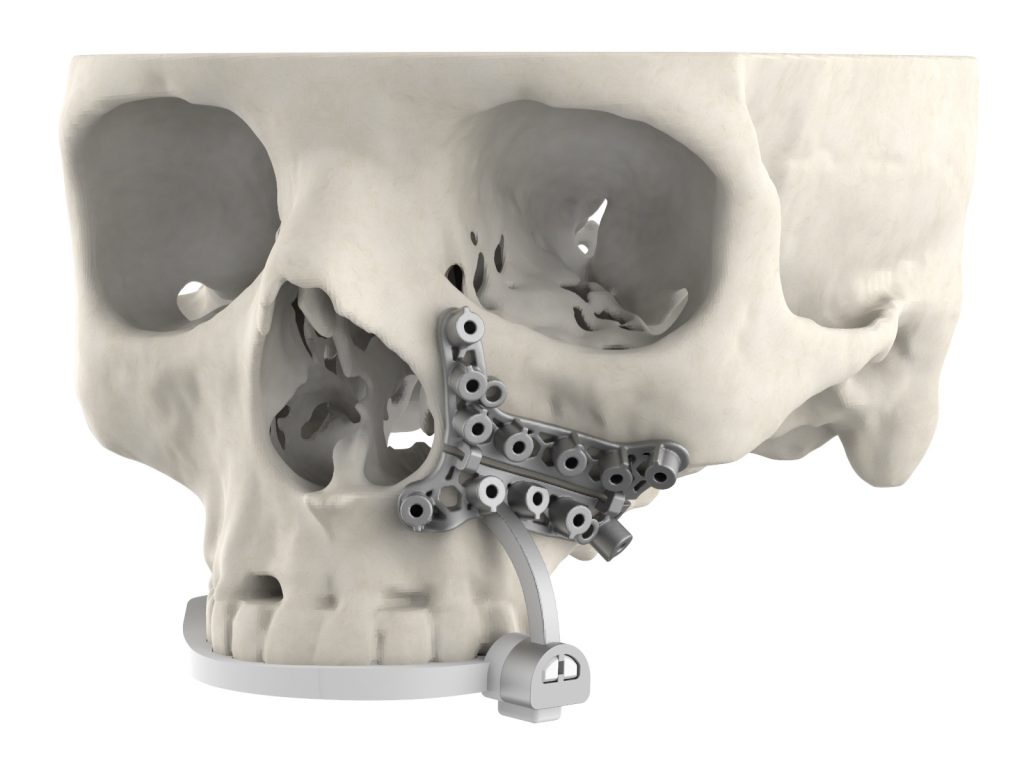The 3D Printing Industry Awards 2022 shortlists are now available for voting. Who will win the 2022 3DPI Awards? Have your say by casting your vote now.
Clinicians at the Claudius Regaud Institute and Toulouse University Hospital have given a patient a nose transplant with an implant grown on their own forearm.
With the patient having unsuccessfully undergone multiple nasal reconstruction surgeries to repair her nose, which she lost most of to cancer in 2013, she agreed to become the test subject for a new approach. This involved the patient having a 3D bioprinted nose grafted onto her forearm, where it was grown for two months before being removed, revascularized and successfully implanted onto her face.

A first for facial transplantation
The Claudius Regaud Institute and Toulouse University Hospital’s unique transplant method was developed to help an unnamed patient who had been treated for nasal cavity cancer in 2013. This saw her undergo radiotherapy and chemotherapy, which caused her to lose a section of her nose, as well as the front part of her palate (the roof of her mouth).
For more than four years after treatment, the patient lived without a nose, due to a failed skin flap grafting procedure, and her difficulty coping with wearing a facial prosthesis. With conventional remedies not cutting the mustard, she was later offered a more experimental surgical procedure that would see a nose 3D bioprinted and grown on her own skin.
In order to create a viable implant, the surgeons worked with a clinical team from Belgian medical device manufacturer CERHUM, who helped formulate a biomaterial-based, nose-shaped structure. This was then implanted onto and fostered on the patient’s arm, and once ready, it was revascularized via ‘anastomosis’ microsurgery.
During such a procedure, a surgical connection is made between two internal bodily structures, often tubular ones like blood vessels or the loops of the intestine. In the case of the patient in Toulouse, the treatment saw her forearm vessels linked to those on her temple, as a means of ensuring the implant wouldn’t be rejected.
According to the surgical team behind the procedure, it was unique and “had never before been performed on such a fragile and poorly vascularized area.” As of last month, they added that the patient had undergone hospitalization and three weeks of antibiotics, but otherwise they were “doing very well.”

CERHUM’s MyBone technology
As a bone graft 3D printing specialist, CERHUM’s contribution to the surgery is said to have played a key role in its success. Using its proprietary MyBone maxillofacial implants, which gained approval for use on European patients earlier this year, the firm says it has already produced thousands of devices for R&D, Contract Development and Manufacturing Organization (CDMO) and implantation.
Behind these implants is a fully-biocompatible bioceramic, which can be 3D printed in a way that allows their porosity to be controlled, and their geometries to be customized to patients. In fact, the devices are made from hydroxyapatite, a component of bone that’s known for its osteoconductive and osseointegration properties, which promote their colonization by blood vessels in-body.
Compared to autografts and allografts, CERHUM says its approach is less intrusive and risky, while it adds that its bioceramic has “better biocompatibility than most synthetic materials.” The firm also claims its devices promote faster healing than standard implants, while reducing the length and number of surgeries patients have to undergo.

CERHUM’s bone grafts are now joined by several other 3D printed maxillofacial guides and implants on the medical market. Last year, 3D Systems launched a titanium and nylon-based hybrid maxillofacial surgical guide, which allows for occlusal registration, something that enables surgeons to operate on patients with greater precision and confidence.
In the past, the Québec Industrial Research Centre has also used a GE Additive Arcam Q10 Plus 3D printer to develop patient-specific lower jawbone implants. The organization worked with cranio-maxillofacial surgeons at the University Hospital of Quebec, on applying 3D printing to transform the design-to-manufacture process of such devices.
To stay up to date with the latest 3D printing news, don’t forget to subscribe to the 3D Printing Industry newsletter or follow us on Twitter or liking our page on Facebook.
While you’re here, why not subscribe to our Youtube channel? featuring discussion, debriefs, video shorts and webinar replays.
Are you looking for a job in the additive manufacturing industry? Visit 3D Printing Jobs for a selection of roles in the industry.
Featured image the patient’s forearm and 3D bioprinted nose. Photo via Toulouse University Hospital.


